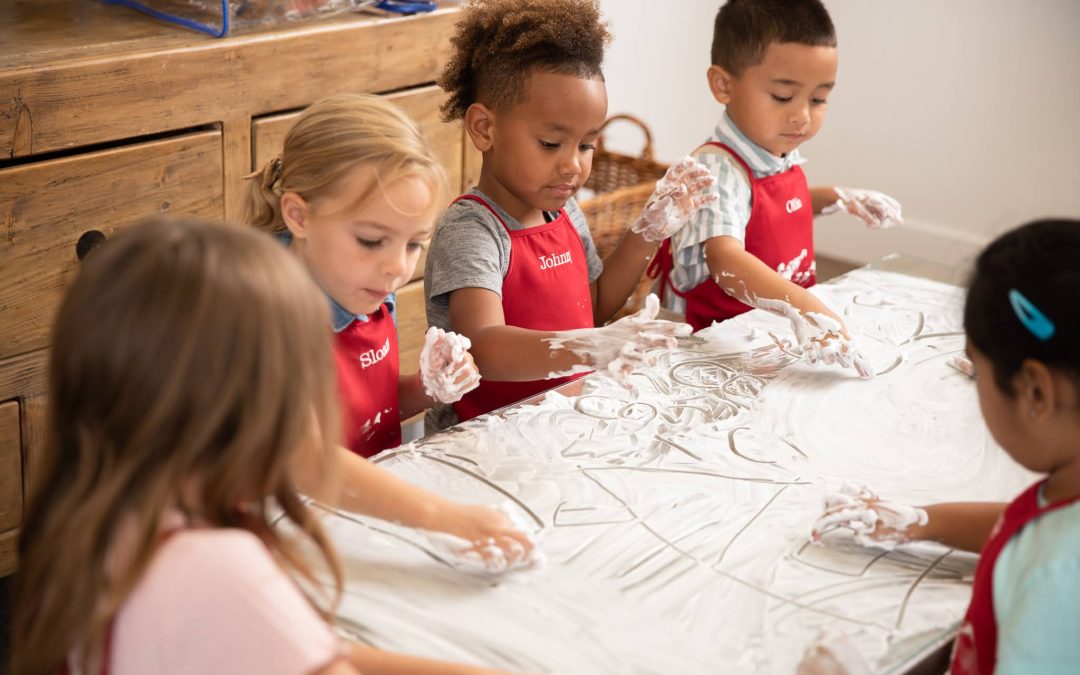Learning is critical for cognitive development, and children thrive on routine. During the summer months, it’s important to keep up the routine of daily learning. You’ve still got your daily routine and expectations to fulfill, so keeping your kids occupied can be a challenge. When there isn’t a teacher actively guiding them through learning exercises, it can be challenging for the kids, too. The key is to make learning engaging, fun, and most importantly, low pressure.
Summer Activity Ideas by Learning Style
Everybody responds differently to learning styles, and they can be especially variable by age. Here are some things to try for every learning style and age.
Visual: Learning Through Sight
Some kids learn best by looking at stuff. They have a tendency to remember information just by looking at it, and as a result, tend to be pretty good at things like spelling or reading maps. To keep them engaged throughout the summer try:
Flashcards
This one’s fun because you can start out by making them together! Review the alphabet, colors, shapes, and more by painting, drawing, and coloring together. When you’re reviewing the cards, make a game out of it: “pick a card, any card!”, play “hide-and-seek”, or switch places, letting your child test you (try to get some wrong so they have a chance to recall information and correct you).
Draw and paint
Learning any new skill keeps the mind sharp. Some sources suggest that painting or drawing specifically bolsters memory and has other health benefits, like enhancing problem-solving, or relieving stress. This one can spill over into tactile learning as you experiment with different mediums like finger paints or painting on clay.
Auditory: Learning Through Sound
Learning through sound requires a lot of talking or singing. You can use pre-recorded stuff or read out loud to engage these kids.
Sing a song
Make up a song together to remember new facts. It doesn’t have to be pretty or make sense to anybody but you two, so make it as silly or serious as you want. You can reuse already-known melodies, too.
Play with other kids
Getting your kids together with other learners and letting them talk to each other is beneficial at any age. They can share the new colors they’ve learned or talk about counting and numbers. You’ll probably need to guide the especially young ones, but social interaction makes learning fun and is useful for kids who learn auditorily.
Read out loud
Sit together and read. Read new books, talk about the new information your learning, and maybe even through an audio book in the mix.
Talk it out
Give your child a chance to review new things that they may have heard from audiobooks, their peers, or a song. Have your child teach you. Have fun taking turns playing teacher and student.
Tactile: Learning Through Touch
Dioramas
There are plenty of pre-made kits available. Play Sand dioramas, for instance, are great all-ages sensory experiences that also double up nicely for visual learners: you can set up a brightly colored aquarium-themed environment or make a dinosaur fossil dig. Get creative and try to play to your child’s interests. While you’re making these dioramas, use every opportunity to point out neat things like the average number of teeth sharks lose (at least one per week) or point out that turtles, snakes, crocodiles, and birds are direct descendants of ancient dinosaurs.
Kinesthetic: Learning Through Doing and Moving
Dance it out
You just made up a new silly song about primary colors or you’ve got some tried and true tunes like “This Old Man” (a great one for learning numbers), “Head, Shoulders, Knees, and Toes” or even the alphabet song. This is your chance to get things really going and make it stick by getting your groove on while you belt it out.
Make a salt or sand tray
Use this sensory exercise to help with handwriting and letter formation. There’s a wide range of things probably lying around your house to use as a tray: a baking sheet, pie plate, styrofoam tray, or even a shoebox lid can be the base, then just add your salt, sand, cornmeal, or even baking soda. Give your kids something to reference and then let them learn.
Chalk learning
Draw a hopscotch that challenges kids on new vocabulary or make a tic-tac-toe that reinforces newly learned shapes.
Role play
This can be good for teaching empathy or other social skills, but can also be used as a language-building exercise. It can also expose them to real-world situations in a hands-on way that can prepare them for how to act. Playing chef, fire chief, police officer, teacher, construction worker, doctor, or even pirate are good ways to spark creativity and expose kids to all sorts of new skills.
Other things to try
At the end of the day, kids pick up everything around them and can learn from just about anything. The main goal is to keep them active. Exercise or learning new hobbies can be just as beneficial to cognitive development as traditional schooling, and it nurtures creativity that can further blossom as they age. Talk to your kids about new things they want to try and explore and create together!

